














| Marpissa muscosa (Clerck, 1757) |















|
|
Scientific name: Marpissa muscosa (Clerck, 1757) Common name: French name: Order: Araneae Family: Salticidae Size: Females: 8 to 11 mm; Males: 6 to 8 mm. Biotope: Forests, woodland edges, orchards, parks and gardens, low growing vegetation. You can often observe it on tree trunks in the sun, on fence posts or on heaps of wood logs. It shelters in bark crevices. Web: No web. Observation period: All year round. Geographic area: Palaearctic region. |
Marpissa muscosa is a large jumping spider with a rather flat body. The cephalothorax is dark brown with some short pale hairs. The four large front eyes are circled with a thin reddish line. They are above a broad band of pale beige hairs. The abdomen is brown with a pale median stripe, especially well marked at the rear. It is surrounded by an interrupted black line made of small wavy dashes. The legs are dark brown, ringed with pale hairs. Males have large purple pedipalps. They do not show the broad band of light beige hair below the eyes. The other jumping spiders of the same genus live in different habitats, in damp habitat among reed beds for Marpissa radiata and in marshes or on coastal dunes for Marpissa nivoyi. Marpissa radiata has uniformly coloured legs and shows two thin longitudinal stripes on the abdomen. The first pair of legs of Marpissa nivoyi are much bigger than the other ones. They are dark brown. The other legs are pale with small blackish rings. |
| [To know more about the Marpissa muscosa] [Next picture] [Top] |
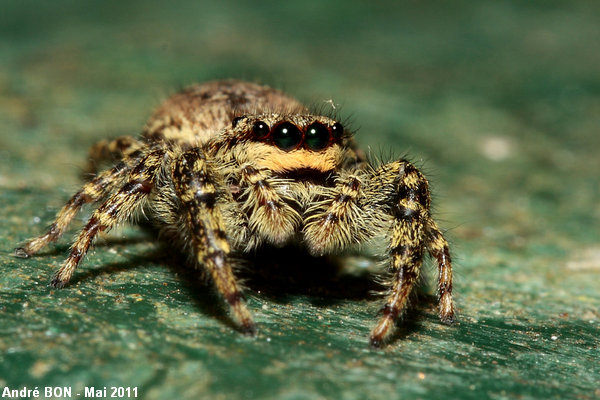
|
What a surprise to find a so large jumping spider on the top cover of the compost tank! I have enjoyed trying to shoot a beautiful front picture so that we can admire its larges eyes circled with a thin reddish line. |
| [To know more about the Marpissa muscosa] [Next picture] [Previous picture] [Top] |

|
I have found this jumping spider inside the house and I have been able to shoot 5 pictures from very close to try to get a nice front view. I shot these pictures with a 24mm lens mounted in reverse to get a very important magnification. I have used the CombineZP software to merge these pictures and I have done some manual corrections to remove the artefacts due to the combination of flash reflexions in the eyes. However this spider has not been patient enough and it walked away before I can shoot some sharp pictures of the two fore legs. |
| [To know more about the Marpissa muscosa] [Next picture] [Previous picture] [Top] |

|
Side view. |
| [To know more about the Marpissa muscosa] [Next picture] [Previous picture] [Top] |
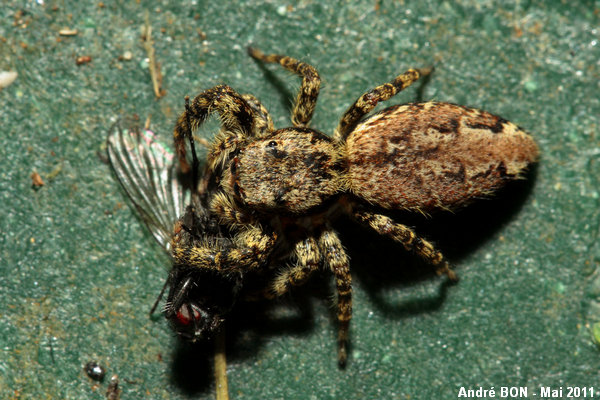
|
Upper side view with a prey. |
| [To know more about the Marpissa muscosa] [Next picture] [Previous picture] [Top] |
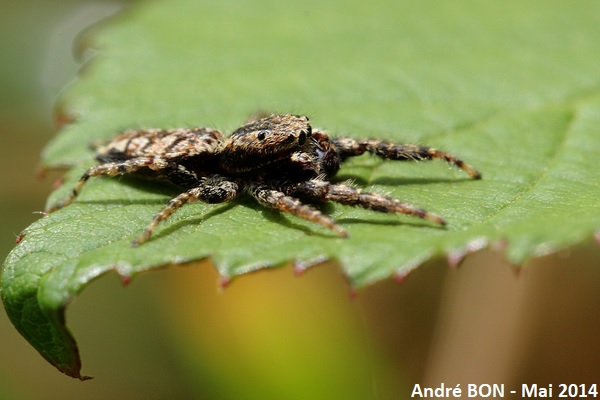
|
Here is my very first observation of a male which appeared to me with a more flattened shape compared to the females I am used to seeing. |
| [To know more about the Marpissa muscosa] [Next picture] [Previous picture] [Top] |
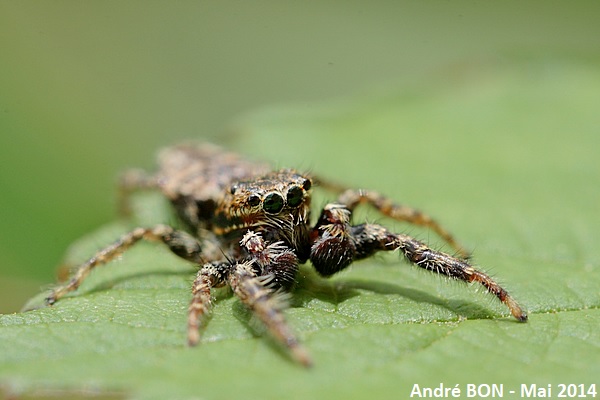
|
Front view of a male showing the large purple pedipalps and the lack of pale beige band below the eyes. |
| [To know more about the Marpissa muscosa] [Next picture] [Previous picture] [Top] |
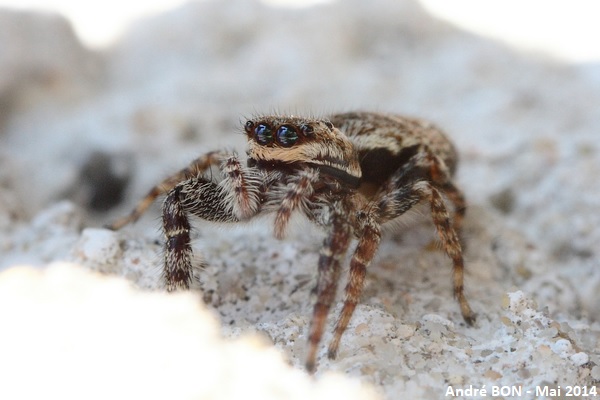
|
Here is one female observed on the wall of the house. I like the reflection in the anterior median eyes. |
| [To know more about the Marpissa muscosa] [Next picture] [Previous picture] [Top] |
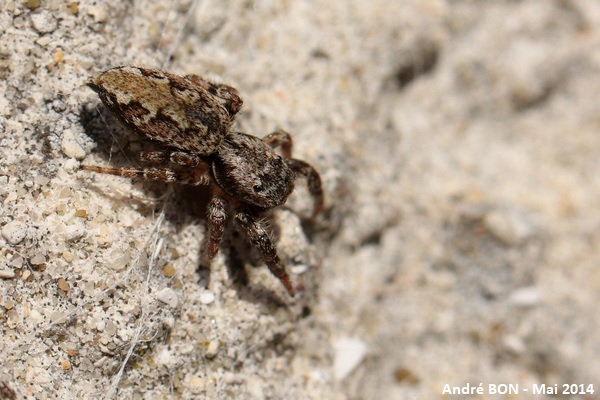
|
Upper side view but I am observed by the posterior lateral eyes. Jumping spiders have a 360°-degree view. |
| [To know more about the Marpissa muscosa] [Next picture] [Previous picture] [Top] |
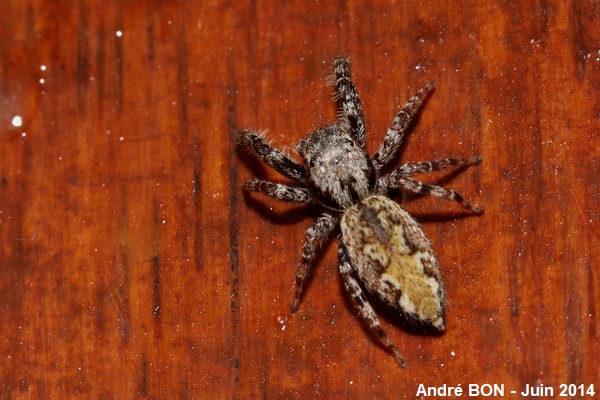
|
Here is maybe the same spider as above, but, this time, a wooden shutter provides a nice background colour. |
| [To know more about the Marpissa muscosa] [Next picture] [Previous picture] [Top] |
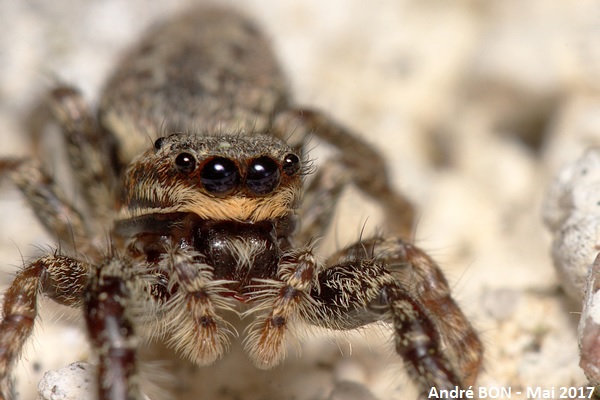
|
Front side close-ups of spiders of the Salticidae family often give nice photos. It's easier with spiders the size of Marpissa muscosa. |
| [To know more about the Marpissa muscosa] [Next picture] [Previous picture] [Top] |
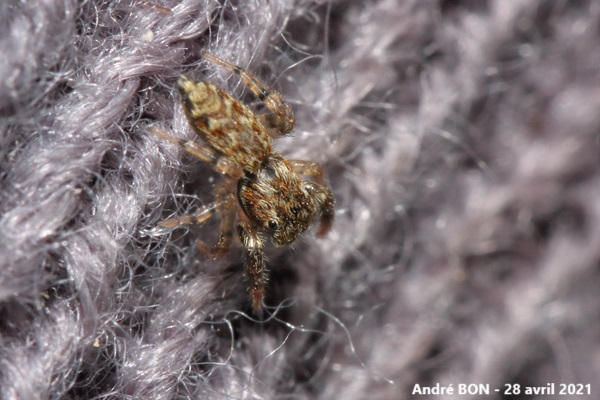
|
Juvenile. |
| [To know more about the Marpissa muscosa] [Next picture] [Previous picture] [Top] |

|
This male entered the house to clean. |
| [To know more about the Marpissa muscosa] [Next picture] [Previous picture] [Top] |
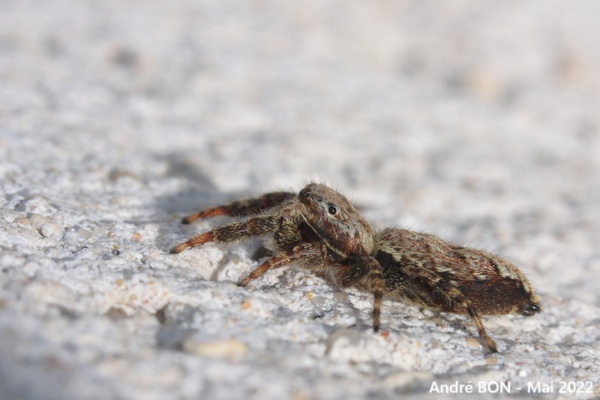
|
I hesitated to post photos of this jumping spider because the page is already well stocked, but since it let me photograph it from all angles, I'll show you the result. Let's start with the profile view which shows the flattened shape well. |
| [To know more about the Marpissa muscosa] [Next picture] [Previous picture] [Top] |
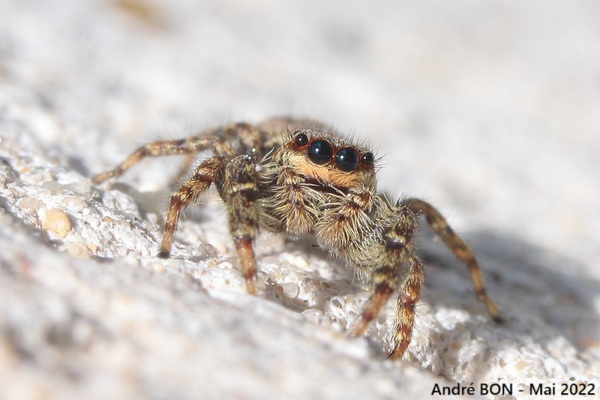
|
Then here is the traditional front view. |
| [To know more about the Marpissa muscosa] [Previous picture] [Top] |
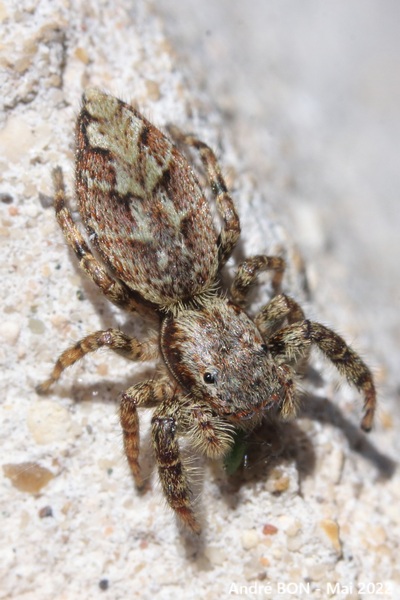
|
Let's finish with the top view. |